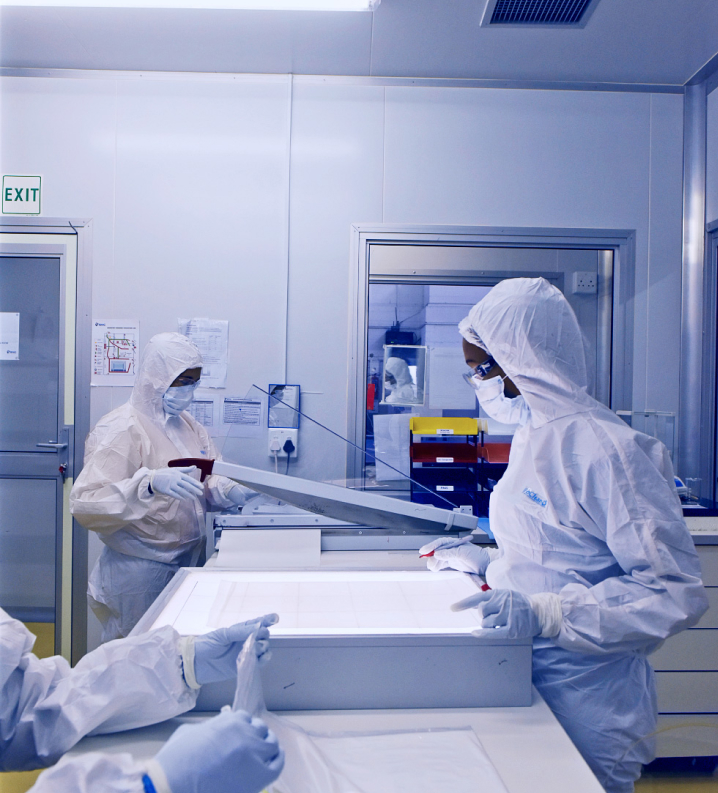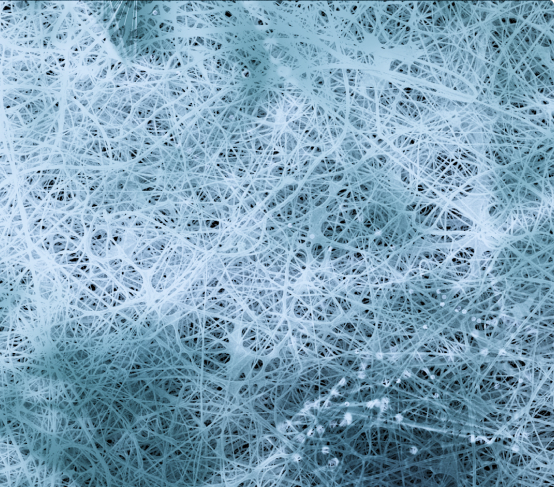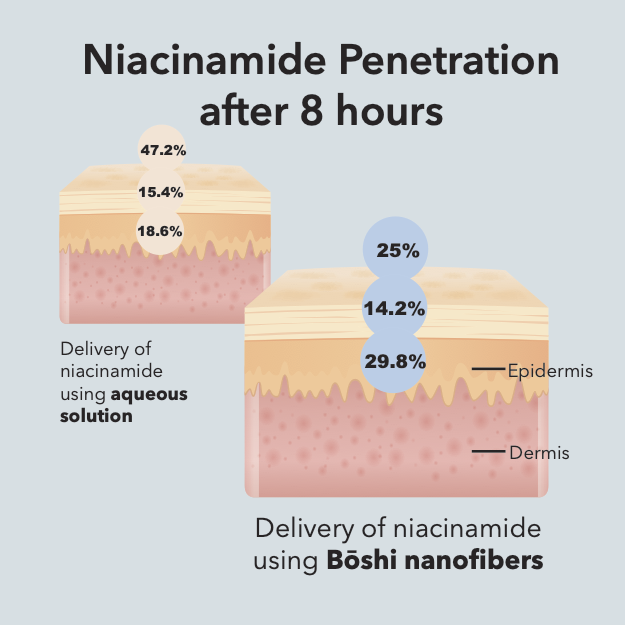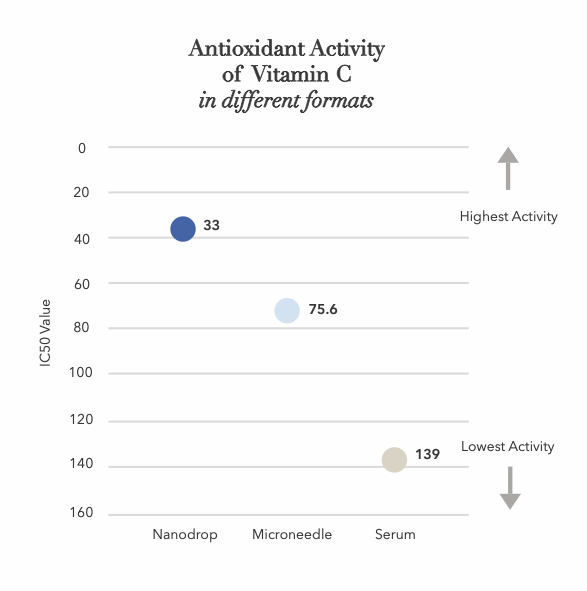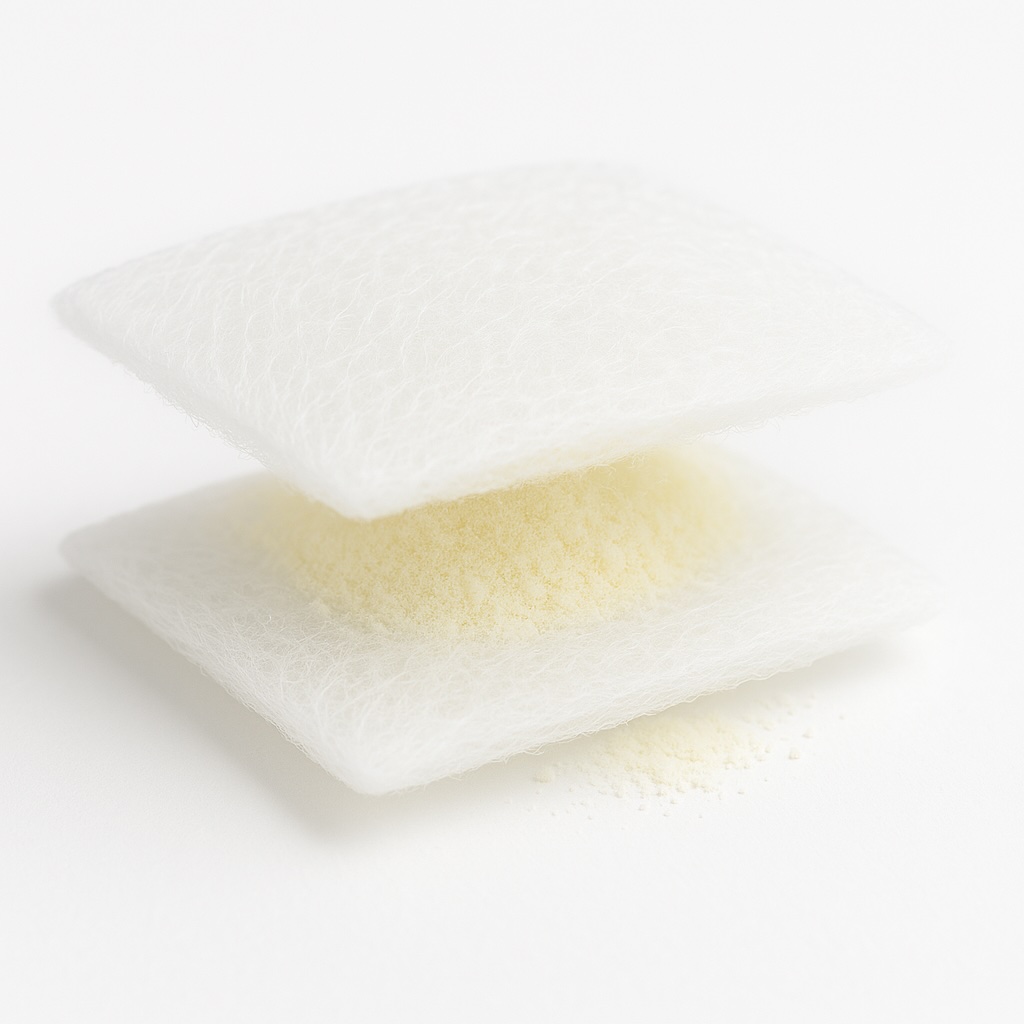Versatile Delivery System
With Bōshi nanofiber technology, you can formulate solutions that contain traditionally incompatible ingredients. Polymer nanofibers are collected as a sheet, and then those sheets can be layered to produce dissolvable nanosheets, with each layer containing a different functional ingredient. Each ingredient can remain isolated until the product is dissolved, just prior to application.
